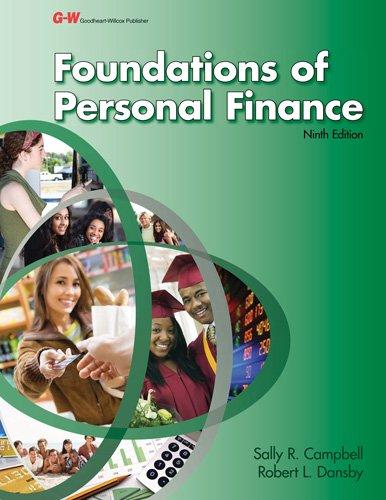Answered step by step
Verified Expert Solution
Question
1 Approved Answer
chapter 3 D) Stable prices aid in the growth of international trade and lessen exchange rate risks for businesses. 6) Which of the following is

chapter 3
D) Stable prices aid in the growth of international trade and lessen exchange rate risks for businesses. 6) Which of the following is NOT an attribute of the "ideal" currency? A) Monetary independence. B) Full financial integration. C) Exchange rate stability. D) All are attributes of an ideal currency. 7) The authors discuss the concept of the "Impossible Trinity" or the inability to achieve simultaneously the goals of exchange rate stability, full financial integration, and monetary independence. If a country chooses to have a pure float exchange rate regime, which two of the three goals is a country most able to achieve? A) Monetary independence and exchange rate stability. B) Exchange rate stability and full financial integration. C) Full financial integration and monetary independence. D) A country cannot attain any of the exchange rate goals with a pure float exchange rate regime. 3.3 Emerging Markets and Regime Choices 1) Beginning in 1991 Argentina conducted its monetary policy through a currency board. In January 2002, Argentina abandoned the currency board and allowed its currency to float against other currencies. The country took this step because A) the Argentine Peso had grown too strong against major trading powers thus the currency board policies were hurting the domestic economy. B) the United States required the action as a prerequisite to finalizing a free trade zone with all of North, South, and Central America. C) the Argentine government lost the ability to maintain the pegged relationship as in fact investors and traders perceived a lack of equality between the Argentine Peso and the U.S. dollar. D) all of the above 2) In January 2002, the Argentine Peso changed in value from Peso1.00/$ to Peso1.40/$, thus, the Argentine Peso against the U.S. dollar. A) strengthened B) weakened C) remained neutral D) all of the above 3) In January 2000 Ecuador officially replaced its national currency, the Ecuadorian sucre, with the U.S. dollar. This practice is known as A) bi-currencyism. B) sucrerization. C) a Yankee bailoutStep by Step Solution
There are 3 Steps involved in it
Step: 1

Get Instant Access to Expert-Tailored Solutions
See step-by-step solutions with expert insights and AI powered tools for academic success
Step: 2

Step: 3

Ace Your Homework with AI
Get the answers you need in no time with our AI-driven, step-by-step assistance
Get Started


